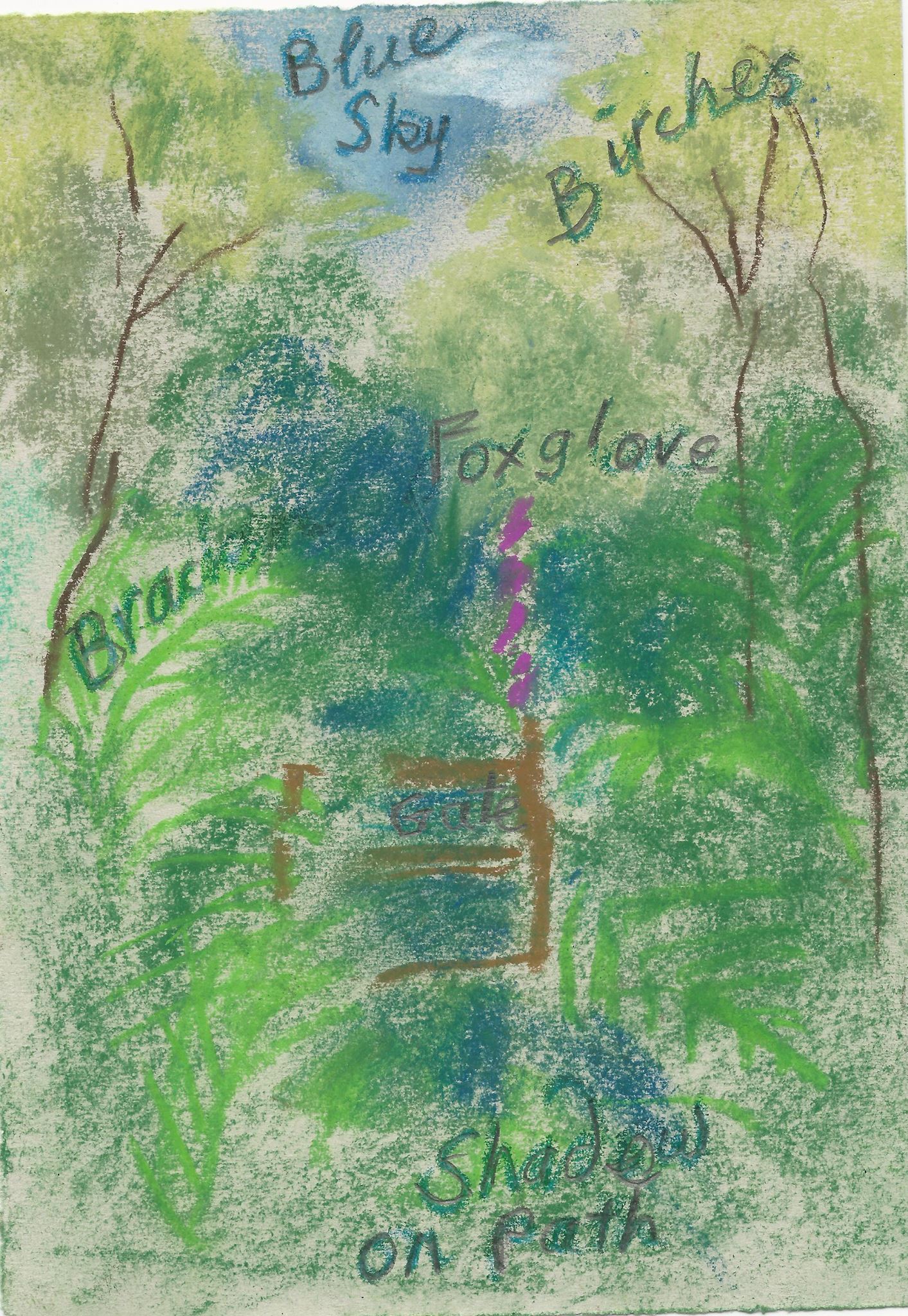Fairhill, or ‘Pishwanton Wood’ as it is also known, is a place apart: an inland island of exceptional biodiversity within the surrounding agricultural land. The marked contrast in biodiversity and the peaceful atmosphere is in itself an immediate wake-up call and a relief to all who come here.
The place as a whole is a form of retreat into nature, where one experience many varied semi-natural Scottish habitats. A mindful walk through the site takes us on a journey from one ecologically distinct space to another, each relating to the surrounding landscape in diverse ways. From an ecological view point this provides a perfect outdoor classroom for anyone interested in experiencing and understanding many of our plant communities and habitats, their process and their metamorphosis as they enliven the land[1].
We deepen this ecological understanding with our way of observing and contemplating Nature within each 'room' (with its unique plant community associated wildlife and atmosphere) and the surrounding landscape. This can awaken us to extraordinary insights and enables us to experience ourselves as a part of Nature. In this way the journey through the retreat space becomes a unique mini-pilgrimage.
We are inspired to work in partnership with Nature: to listen to the land and its needs; to deepen our understanding of Scottish natural habitats and their process of metamorphosis; to care for the extraordinary biodiversity here, and importantly to find ways to co-create with Nature (as opposed to ways of managing nature), and we aim to inspire others to do the same.
We aim to maintain the high biodiversity and integrity of the many rooms here, with their distinct and varied plant communities.
A few areas at Fairhill have been set aside for cultivation: the orchard, together with the central medicinal and culinary Herb garden, which was originally created by Margaret Colquhoun and numerous volunteers in 2007. This has now been redesigned to include a kitchen garden, which serves the Fairhill day service provision as valuable activity space and as visitor focal point.
Once fully stocked, the garden will provide a valuable teaching, demonstration and research garden for biodynamic and medicinal herb studies and for the harvesting of biodynamic herbs for remedy preparations and culinary purposes.
The uncultivated but carefully cared for semi-natural areas of woodland, marsh, meadow, bog and wetland throughout the site are biodynamically maintained for the general care of the land and its biodiversity and for the benefit of the associated beings as well as for wild harvesting. This is a unique application of the biodynamic method which is usually practiced on cultivated land on farms, gardens or small-holdings. We are often looking for seasonal volunteers to help us with all this work on the land! Please see our contact page for more information on how to get involved.
[1] The land (first appearing on maps as 'Fairhill' probably derived from 'Fairy Hill') was originally set-aside land (protected and untouched by agriculture) left by our ancestors who knew to set aside land for the Good People (elemental Beings and Ancestors on sacred land). By the mid 1800's this practice was no longer adhered to by the local farmers and the place was planted as a worked wood and a place for waterworks (a collecting tank for springs from the field opposite and pipes to pipe the water out to supply a large area of Haddingtonshire). Soon afterwards parts of the site were abused as a fly-tip. Around this time and in direct association with these activities it acquired the name 'Pishwanton Wood' and despite being a loved bit of land by some discerning local inhabitants, continued to be disrespected and abused by many.
Margaret Colquhoun recognized the place as an ecologically varied and important sacred site and worked hard to remove the layers of rubbish, and together with Nature herself to co-create the beautiful protected natural spaces we see today. The plants themselves are in the process of continuing this reinvigoration process which was started in 1996 by Margaret Colquhoun and continues with the help of many caring hands and devoted volunteers.


